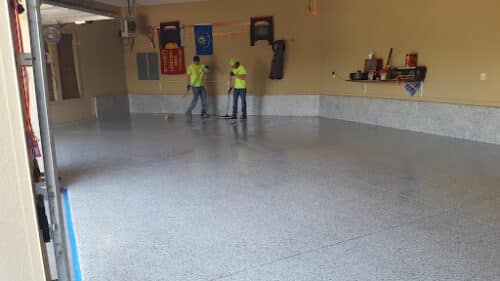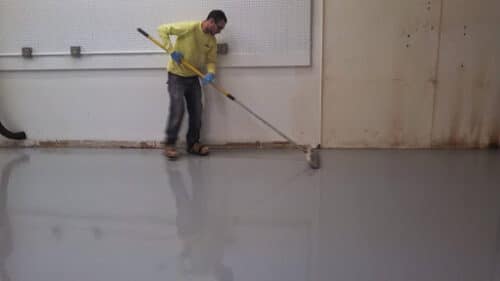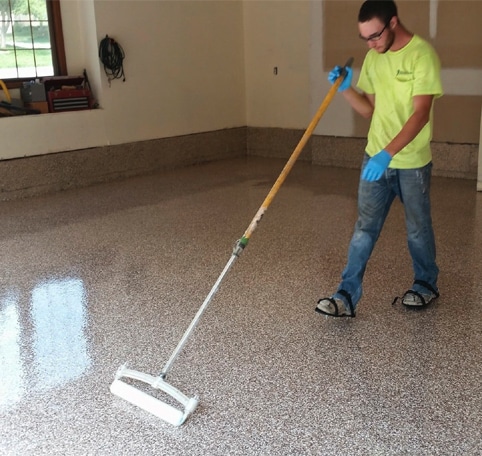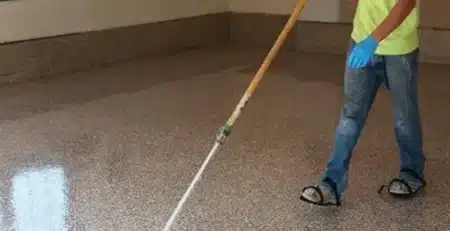31
Jul
Concrete Coatings: Polyaspartic vs. Epoxy – Weighing the Pros and Cons
Selecting the ideal coating for concrete surfaces involves a careful evaluation of polyaspartic and epoxy options. Each presents distinct advantages and disadvantages, making the decision a matter of prioritizing specific needs and budget considerations.Polyaspartic Coatings Pros:
- Unmatched Durability: Superior resistance to chips, cracks, abrasion, and heavy impacts. Ideal for high-traffic areas.
- UV Stability: Maintains color and gloss even under intense sunlight exposure, perfect for outdoor applications.
- Rapid Curing: Allows for quicker return to service, minimizing downtime in commercial or industrial settings.
- Temperature Versatility: Can be applied and cured in a wider range of temperatures, suitable for various climates and seasons.
- Chemical Resistance: Excellent resistance to chemicals and stains, simplifying maintenance and ensuring longevity.
- Versatile Application: Suitable for both horizontal and vertical surfaces, including walls, columns, and steps.
Polyaspartic Coating Cons:
- Higher Cost: Typically more expensive than epoxy due to material costs and professional installation requirements.
- Requires Professional Installation: DIY application is not recommended due to the typical quicker set times. Concrete Floor Supply does have a slower set Polyaspartic for those who are inexperienced or need more time (Poly 85 Slow).
- Limited DIY Options: Not as readily available for DIY projects compared to epoxy.
Epoxy Coatings Pros:
- Cost-Effective: This is a more affordable option for budget-conscious projects.
- DIY-Friendly: This can be applied with basic tools and techniques, making it suitable for DIY enthusiasts.
- Widely Available: Readily accessible at most hardware stores and online retailers. (Although be aware that epoxy from a big box store is a far cry from the professional quality you would receive from a company like Concrete Floor Supply)
Epoxy Coating Cons:
- Less Durable: More susceptible to cracking, chipping, and wear over time, especially in high-traffic areas.
- Susceptible to UV Damage: Can yellow and fade with prolonged exposure to sunlight.
- Longer Curing Time: Requires a longer period for complete curing, leading to longer downtime.
- Limited Temperature Range: Ideal application and curing conditions are more restrictive than polyaspartic.
- Not good for both base and topcoat: Epoxy will amber and turn yellow over time and is typically only used in a basecoat application. A polyaspartic is still used for the topcoat in most cases over epoxy.
Choosing the Right Coating:
Consider these factors when making your decision:- Project Budget: Determine your budget and prioritize accordingly. Polyaspartic is a more expensive option upfront, but its longevity may offer long-term value.
- Traffic and Usage: Assess the expected foot and vehicle traffic. Polyaspartic is more suitable for high-traffic areas due to its superior durability.
- Sunlight Exposure: If the surface is exposed to sunlight, polyaspartic's UV stability is a significant advantage.
- Time Constraints: Polyaspartic's rapid curing is a major benefit if a fast turnaround time is crucial.
- DIY vs. Professional: Evaluate your comfort level with DIY projects and the complexity of the surface. Epoxy is more DIY-friendly, but polyaspartic often requires professional installation.
- Apples and Oranges: Understand that you are almost comparing two different things. Epoxies are generally used for base coats and are covered completely while Polyaspartics can be used for both base and topcoat.





